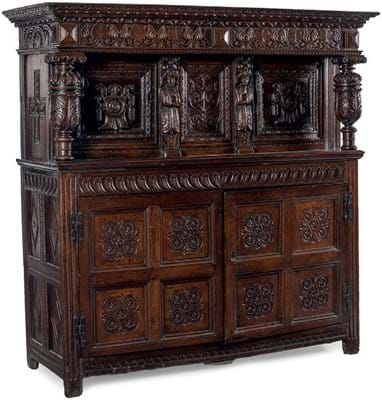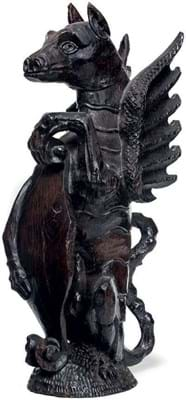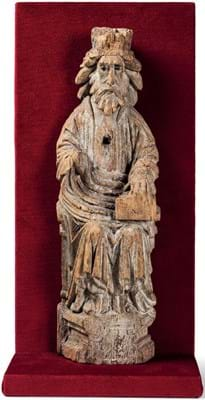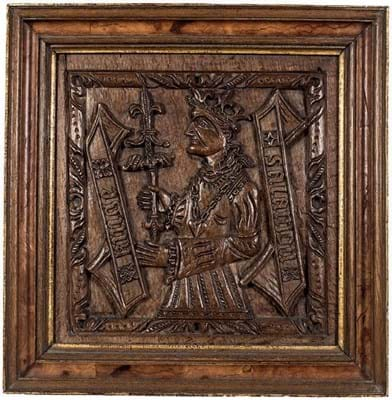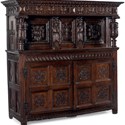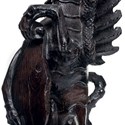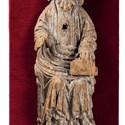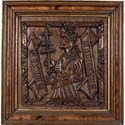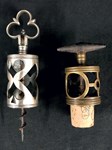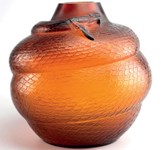“There was the sort of buzz I haven’t seen for years,” said veteran early oak specialist Simon Green of the first single-owner sale to be held by Pedestal Auctions (25% buyer’s premium) since it was set up three years ago.
For the dealers and collectors who bought 92% of the 392 lots, pushing the total to around £400,000, there were also references to the past in more than the 15th-17th century material which took the top prices.
It comprised the personal pieces owned by William Stokes (1921-2015) and his partner Peter Bontoft (1945-2018). Both were well-known figures in the trade since Stokes began dealing in the 1960s in Leicestershire before moving to Cirencester, where he and Bontoft lived in the two floors above their shop in Dollar Street.
Green knew Stokes well and is himself a familiar figure to enthusiasts. He was the early oak specialist at Christie’s South Kensington for 25 years before it closed and is now a consultant at Kensington-based Pedestal, set up in 2016 by fellow members of the London diaspora, Guy Savill and Sally Stratton, formerly of Bonhams.
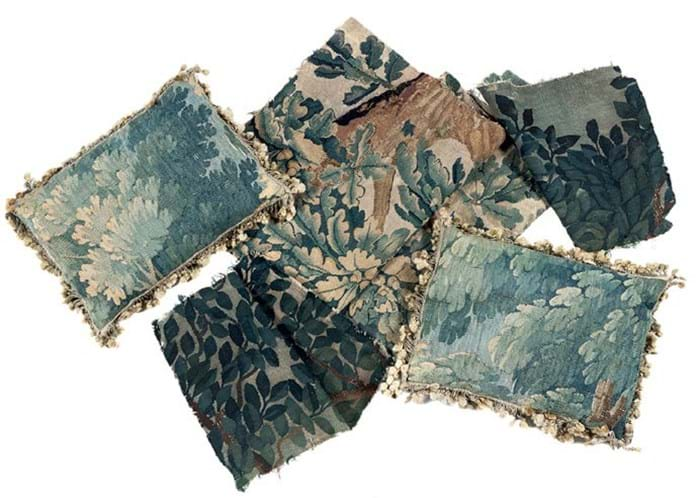
Biggest surprise of the Stokes Collection was this set of cushions with 17th century tapestry fronts. Designed with trees and leaves, the 15 x 20in (38 x 52cm) cushions were offered with a 23in x 3ft 10in (58.5cm x 1.17m) length of tapestry, probably put by at Stokes’ shop for restoring upholstery on early oak chairs. Estimated at £200-300, the lot went to a private buyer at £3500.
Ideal venue
The Pedestal model is to hold major sales at Moor Park Mansion in Hertfordshire and ‘luxury sales’, such as handbags, in Knightsbridge, but the Bingham Hall in Cirencester was the obvious venue for the Stokes collection sold on March 4.
“With its history as an auction venue it was ideal for this pop-up sale,” said Green, adding that it was “a privilege” to put his old acquaintance’s collection on the market.
“Early oak didn’t take as big a hit as mahogany or furniture generally in the downturn but the market is still similar,” said Green. While run-of-the-mill examples remain three-figure cheap, there is strong demand for the best material, of which there was quite a choice at Cirencester.
Only six pieces in the sale had been in the shop, the rest being personal favourites of Stokes and Bontoft. To a large extent this meant the lots were unaffected by trade’s often damning judgment of ‘seen’, while collectors could be reassured that it had been given the approval of experts.
Private buyers took the top two lots: a huge c.1550 West Country wall settle and a James I press cupboard.
The 15ft 6in (4.7m) wide settle, illustrated in the news pages of ATG No 2383, featured 10 plain panels surmounted by arched crest-panels carved with Romayne portraits of a bearded man and three hooks to one end carved as faces.
Documented in Chinnery’s Oak Furniture, The British Tradition, a number of these still survive in situ in Somerset and nearby counties. It had a broad £5000-10,000 estimate and sold at £18,000 via thesaleroom.com.
The 5ft 5in (1.66m) wide and high cupboard is a type made in Gloucestershire c.1620. It was profusely carved overall with stylised anthemion and rosette-filled cartouches and flanked by caryatids. The doors to the lower section were carved with Celtic swirls and the sides with an unusual cross motif.
Chosen as the frontispiece for JT Garside’s 1924 book, Old English Furniture, it was pitched at a modest £3000-5000 but sold at £14,000.
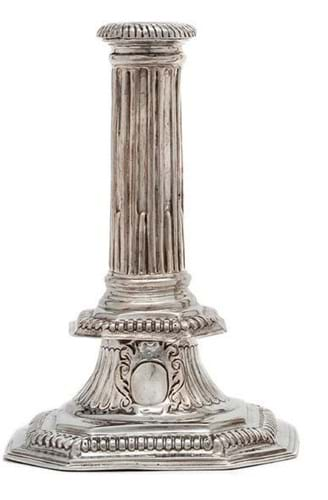
Although not from the Stokes Collection, a few pieces of silver which would complement the glowing early oak material were included at the Pedestal sale. Among them was a pair of candlesticks (one shown), by Richard Syng, London, 1698. Standing 6¼in (16cm) tall and weighing 13oz in all, the pair went above estimate at £5500.
Upbeat atmosphere
It wasn’t all plain selling – a c.1610 three-tier court cupboard pitched at £8000-10,000 and a William and Mary olive wood and inlaid chest estimated at £5000-8000 were among the few unsolds. But, boosted by keen trade bidding, particularly for carvings, such setbacks hardly dented the upbeat atmosphere.
Selling on the lower £5000 estimate was a 6½in (16.5cm) tall, 19oz tankard with the maker’s monogram SL and marked for London 1689. It bore a contemporary coat of arms and the handle with its twisted scroll thumbpiece featured acanthus leaf and floral engraving.
Top-seller among the carvings was a set of three c.1550, 17in (43cm) square panels depicting Edward VI holding a sword, King Solomon with his staff, and the motto Honi soi qui mal y pense round a Tudor rose.
Documented by Chinnery, and now in modern oak and marbled parcel-gilt frames, the set doubled the mid-estimate to take £12,000.
Going further above hopes was a c.1480, 18in (46cm) high kingly figure probably representing God the Father. Mounted on a velvet backboard, it was pitched at £2000-3000 but went to a specialist dealer at £7800.
Two newel post finials also sold well. An early 17th century, 2ft (62cm) tall pair carved as heraldic lions doubled the mid-estimate at £7000 and a single c.1550 example achieved more.
Carved as a heraldic dragon, the 20in (51cm) tall finial featured in M Jourdain’s 1924 work, English Decoration and Furniture of the Early Renaissance, and at tripled the top estimate to sell online at £7500.


